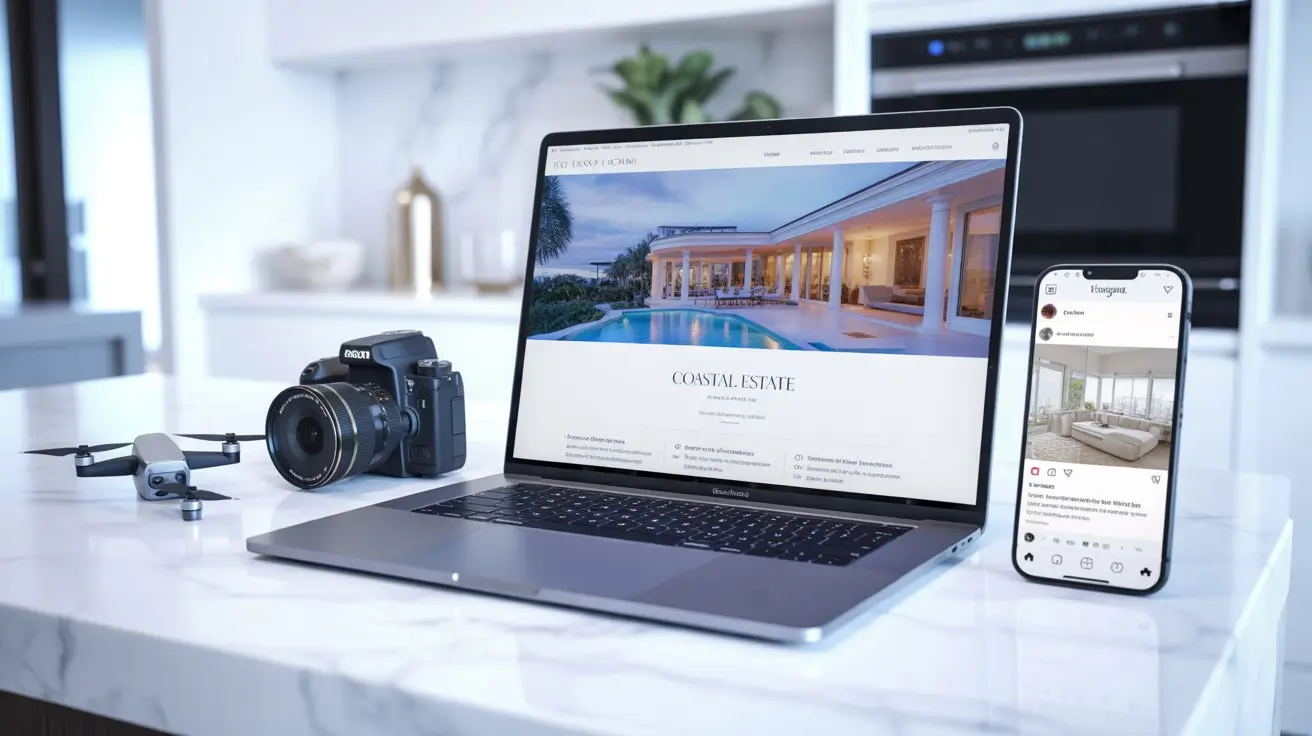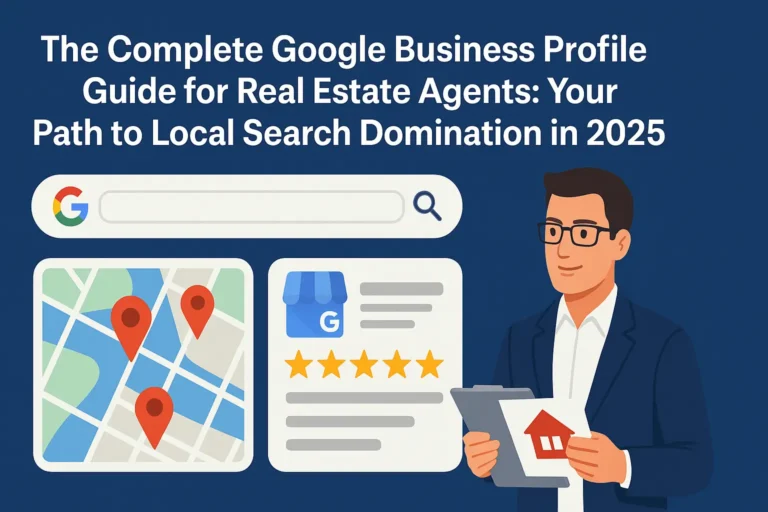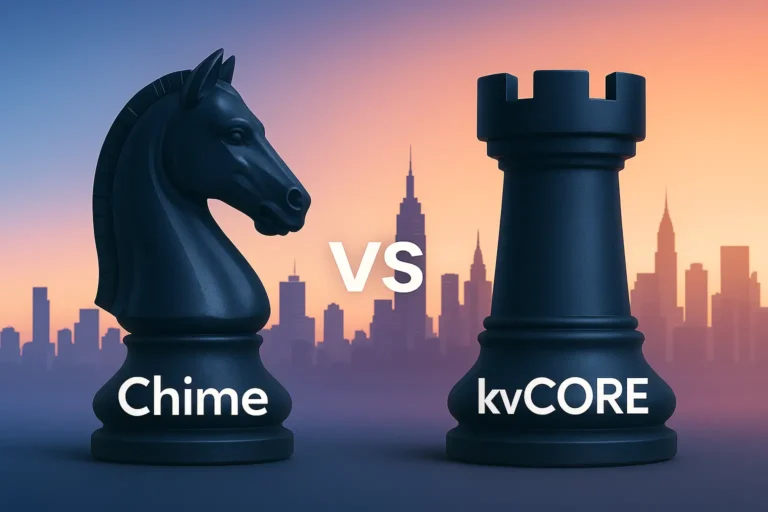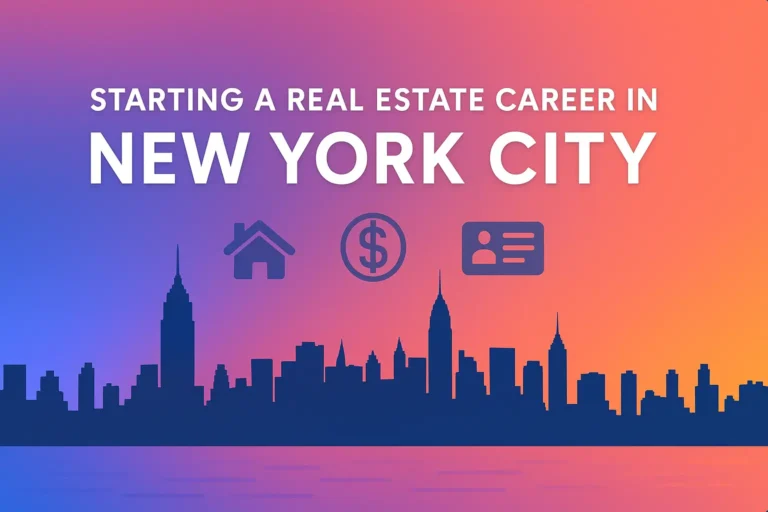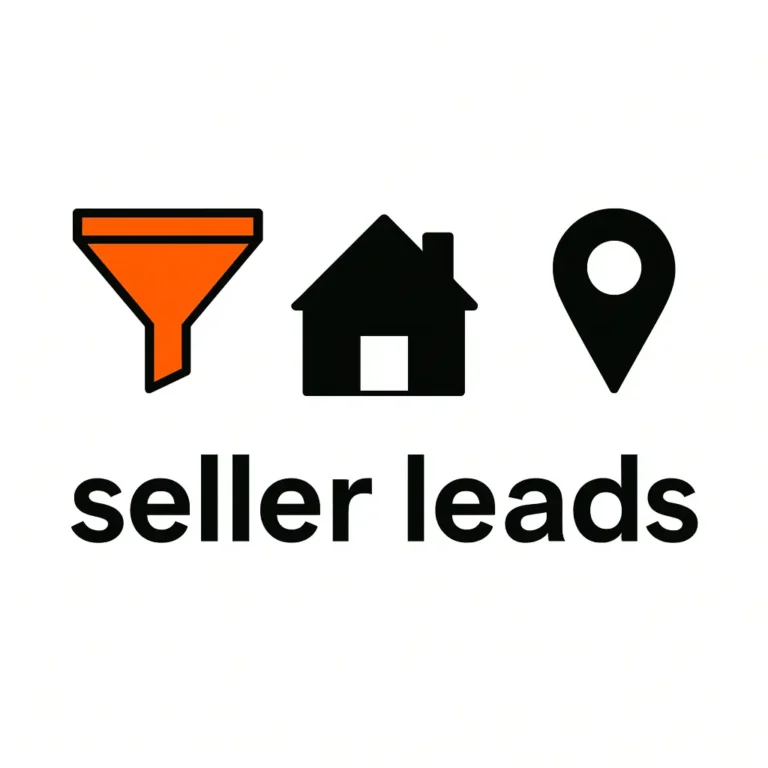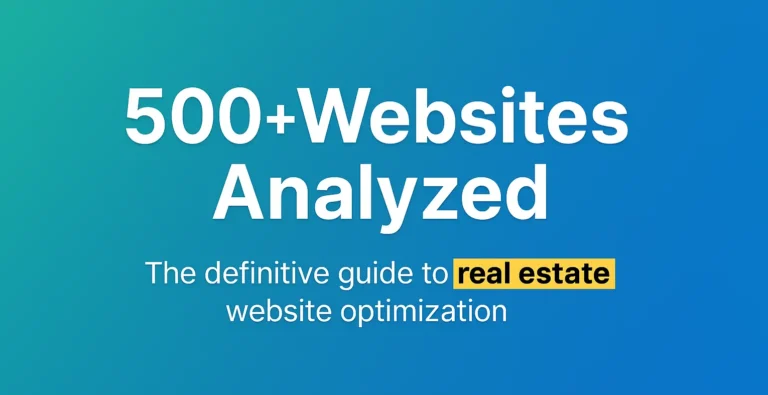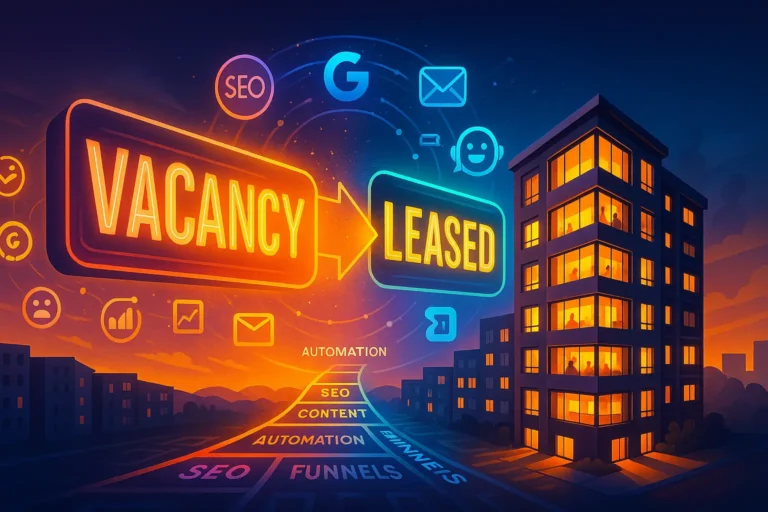The Complete Guide to Luxury Property Marketing: Strategies That Drive Results
Last updated: December 15, 2024
When a $50 million Bel Air mansion sits on the market for over two years before selling at a 75% discount, it reveals a harsh truth: luxury property marketing requires fundamentally different strategies than traditional real estate. While standard properties may sell through MLS listings and open houses, high-end properties demand cinematic storytelling, exclusive networks, and white-glove service that transforms agents into trusted advisors.
This guide provides actionable strategies that successful luxury agents use to command premium prices, attract qualified buyers, and build lasting relationships with high-net-worth clients. You’ll discover the specific pain points that derail luxury sales, proven marketing tactics that generate 403% more inquiries, and the technology tools reshaping how million-dollar properties reach their ideal buyers.
Whether you’re a broker seeking to expand into luxury markets or an agent looking to elevate your high-end listings, these insights will help you navigate the unique challenges of marketing properties where buyers expect perfection and discretion matters as much as price.
Understanding the Luxury Real Estate Ecosystem
The luxury market operates by entirely different rules than conventional real estate. Standard agents work with broad clientele across median price ranges, focusing on functionality and affordability. Luxury specialists serve affluent individuals seeking unique, high-value properties that reflect their success and lifestyle aspirations.
What Defines “Luxury” Beyond Price
Price alone doesn’t create luxury. True luxury properties combine several key elements that justify premium valuations:
Rarity and Uniqueness: One-of-a-kind architectural features, historical significance, or locations that cannot be replicated. A penthouse with Central Park views or a beachfront estate with private access creates inherent scarcity.
Superior Construction and Materials: Premium finishes like Calacatta marble, integrated smart home systems, advanced security features, and high-capacity solar arrays signal quality over quantity.
Prime Location: Properties in exclusive neighborhoods, school districts, or areas with specific amenities that matter to wealthy buyers. Location criteria vary dramatically by region and buyer preferences.
Lifestyle Enhancement: Features that facilitate the owner’s desired lifestyle, from wine cellars for collectors to home theaters for entertainers to private gyms for fitness enthusiasts.
Sustainability and ESG Features: LEED Platinum, WELL Building certification, or regional green standards (IGBC in India, Green Mark in Singapore) now command 5-15% premiums in luxury markets according to USGBC research.
Regional Luxury Benchmarks:
- New York/Manhattan: $5M+ for luxury classification, emphasis on views, building amenities
- Mumbai/Delhi NCR: ₹10+ crores ($1.2M+), focus on security, air quality, exclusive access
- Dubai/UAE: AED 5M+ ($1.4M+), priority on waterfront access, smart home integration
- London: £3M+ ($3.8M+), historical significance and garden space premium values
- Singapore: S$5M+ ($3.7M+), scarcity drives values, sustainability certifications increasingly important
Buyer Psychology in High-End Markets
Luxury buyers make decisions based on emotional fulfillment and status rather than purely financial calculations. They purchase narratives, symbols of success, and experiences rather than just properties.
These buyers focus less on room counts and more on how the home facilitates their lifestyle goals. They might prioritize entertaining spaces, privacy features, or proximity to exclusive clubs over traditional metrics like cost per square foot.
Understanding this psychology shapes every aspect of successful luxury marketing, from visual presentation to networking strategies.
Critical Pain Points That Derail Luxury Sales
Seller Challenges That Sabotage Success
Emotional Overpricing: The most common mistake sellers make involves setting prices based on emotional attachment rather than market data. According to luxury market research by the Institute for Luxury Home Marketing (ILHM), properties priced more than 10% above comparable sales remain on market 60% longer than appropriately priced homes, often requiring eventual price reductions that damage market perception.
Research from luxury market specialists indicates that overpriced luxury properties face compound challenges: they attract fewer qualified showings initially and create negative market perception when price adjustments become necessary.
Inadequate Presentation: Luxury buyers expect move-in-ready properties. Minor imperfections like dated fixtures, worn surfaces, or poor staging create negative impressions that can derail six-figure negotiations.
Generic Marketing Approaches: Standard MLS listings and traditional open houses fail to reach high-net-worth individuals who rely on private networks and exclusive platforms for property discovery.
Inflexible Showing Policies: Restricting viewing times can eliminate serious buyers, particularly international clients who travel specifically to tour properties.
Agent and Brokerage Obstacles
Limited Qualified Buyer Pool: The small number of individuals capable of purchasing luxury properties creates intense competition for each potential client. Success requires sophisticated targeting and relationship building.
High Marketing Investment Requirements: Luxury listings demand substantial upfront costs for professional photography, videography, staging, and targeted advertising. These investments carry risk given longer sales cycles.
The Exclusivity Paradox: Luxury brands rely on scarcity and discretion for positioning, but digital platforms reward broad exposure and frequent content publication. Balancing prestige with visibility requires strategic finesse.
Barrier to Entry for New Agents: Affluent clients demand proven track records, creating a catch-22 where agents need luxury experience to attract luxury clients but need luxury clients to gain experience.
The Luxury Marketing OS™: A Complete Operating System
Stage 0: Market Intelligence Foundation
Before creating any marketing materials, successful luxury agents analyze current market conditions using professional industry data sources.
Recent market insights from the Institute for Luxury Home Marketing (ILHM) indicate that branded residences command a 33% premium over comparable non-branded luxury properties, according to Knight Frank’s Wealth Report analysis. This trend reflects buyers’ increasing focus on community, amenities, and lifestyle curation rather than just individual property features.
Market Research Checklist (Week 1):
- Review ILHM monthly luxury market reports for your region
- Analyze Knight Frank’s prime property indices for pricing trends
- Identify 3-5 comparable sales from past 90 days
- Document unique selling propositions vs. active competition
- Assess seasonal demand patterns for your price range
Stage 1: The Five-Point Pricing Narrative
Luxury pricing requires sophisticated storytelling that justifies premium valuations through concrete proof points.
The Luxury Proof Stack Framework:
- Architect Pedigree: Document designer credentials, awards, and notable projects
- Materials Excellence: Catalog premium finishes, custom elements, and craftsmanship details
- Scarcity Factors: Highlight irreplaceable location, views, or architectural features
- Lifestyle Adjacency: Map proximity to exclusive amenities, schools, or cultural institutions
- Neighborhood Halo: Quantify area appreciation trends and prestige indicators
Stage 2: Asset Production with Concrete Budgets
Professional content creation drives luxury buyer engagement more than any other factor. According to real estate marketing research, 99% of luxury buyers cite professional photography as the most crucial element in deciding which properties to view.
See how a $5 million property is transformed into a cinematic experience — notice shot selection, pacing, and emotional beats
Budget Allocation Framework:
For Properties $2-10M USD (Primary Markets):
Properties $2-10M USD
99% buyer viewing influence
403% more inquiries
25% faster time on market
ROI: 5-15% price premium
Properties $750K-2M USD
Focus on 25-30 key images
Smartphone quality acceptable
Essential for remote buyers
ROI: 3-8% price premium
Currency conversions approximate: EUR multiply by 1.1, GBP by 1.3, INR divide by 83, AED divide by 3.7
Cinematic Video Production Standards: Properties with professional video tours receive 403% more inquiries than those with photos alone. Effective luxury videos tell stories about lifestyle and emotion rather than simply showcasing rooms.
Essential Shot List Framework:
- Hero shots: Grand entrance, primary living spaces (60 seconds)
- Lifestyle vignettes: Morning coffee, entertaining areas (45 seconds)
- Architecture details: Unique features, craftsmanship (30 seconds)
- Outdoor/aerial: Property setting, neighborhood context (45 seconds)
- Total edit length: 3-4 minutes maximum
Copy Formula: “Legacy + Lifestyle + Location + Lineage”:
- Legacy: Historical significance, architectural importance
- Lifestyle: Daily experiences, entertaining potential
- Location: Neighborhood prestige, proximity advantages
- Lineage: Previous ownership, design pedigree
Stage 3: Multi-Channel Distribution Strategy
The OEPD Framework (Owned, Earned, Paid, Partner):
Owned Media Channels:
- Single-property website (required for $2M+ properties)
- Agent/brokerage VIP email lists (500-2,000 contacts)
- Social media content calendar (3-4 posts weekly)
Earned Media Targets:
- Architectural Digest, Elle Decor for design-forward properties
- Local luxury lifestyle publications
- Industry trade publications (The Real Deal, Inman)
Paid Media Budget Allocation ($5,000-15,000 monthly):
- Facebook/Instagram targeted ads: 40% ($2,000-6,000)
- Google Search/YouTube: 30% ($1,500-4,500)
- LinkedIn thought leadership: 20% ($1,000-3,000)
- Niche luxury newsletters: 10% ($500-1,500)
Partner Channel Strategy:
- Wealth managers and family offices
- Luxury service providers (interior designers, art advisors)
- International brokerage networks
- Private membership clubs
Stage 4: Luxury Funnel Math and ROI Framework
The Luxury Sales Funnel with KPI Benchmarks:
Qualified Inquiry Definition: Contact from financially verified prospect (income >$500K annually or liquid assets >$2M) with specific questions about property features, showing requests, or comparable market questions.
Sample ROI Calculation for $5M USD Property:
- Total Marketing Investment: $45,000 USD
- Content creation: $25,000 (photography, video, staging)
- Digital advertising: $12,000 (3 months across channels)
- Events and PR: $8,000 (private viewings, media outreach)
- Commission at 2.5%: $125,000 USD
- Net ROI: 178% return on marketing spend
- Time to Sale: 4-6 months (vs 12+ months with basic marketing)
Attribution Model for Luxury Sales (Based on ILHM Transaction Analysis): Luxury buyers rarely follow linear purchase paths. Track multiple touchpoints:
- Direct Attribution: 35% (website visits, direct inquiries, paid advertising)
- Referral Networks: 25% (wealth managers, past clients, professional services)
- Dark Social: 40% (private conversations, word-of-mouth, exclusive events)
Qualitative Tracking Methods for Dark Social:
- Deal Journal Template: Weekly client interaction log capturing informal conversations, referral mentions, social proof comments
- Exit Interviews: Post-closing conversations with buyers about actual decision influencers
- Network Mapping: Visual documentation of referral relationships and influence patterns
- Event Impact Assessment: Follow-up surveys after private viewings and exclusive events
Stage 5: Segment-Specific Playbooks
Ultra-High-Net-Worth (UHNW) Domestic Buyers:
- Primary channels: Private wealth managers, family offices
- Content focus: Investment analysis, tax implications, privacy features
- Engagement style: One-on-one consultations, private presentations
- Timeline: 6-12 month decision cycles
International Buyer Segments:
European/UK Buyers:
- Preferred platforms: Financial Times Property, Knight Frank listings
- Content requirements: Currency conversion tools, tax treaty information
- Communication: British spelling, metric measurements
- Legal considerations: FIRPTA compliance, wire transfer procedures
Middle East/GCC Buyers:
- Cultural considerations: Prayer rooms, extended family spaces
- Investment focus: Citizenship by investment programs, education proximity
- Communication timing: Ramadan scheduling considerations
- Payment methods: Islamic finance compliance options
Asian Buyers (China/India/Singapore):
- Platform preferences: Juwai.com for Chinese buyers, local luxury portals
- Content needs: Feng shui considerations, educational district information
- Language support: Mandarin/Hindi materials for complex transactions
- Legal framework: CFIUS review awareness for certain price points
Technology Stack Guide: Vendor Comparison by Function
Content Creation and Showcase Platforms
3D Virtual Tours and Staging:
• Properties $5M+: Choose Matterport for premium presentation
• Properties $1-5M: iGUIDE offers best value with floor plans
• Properties <$1M: Asteroom provides cost-effective 3D capability
Virtual Staging Solutions:
• 10 rooms staged: PhotoUp ($150-250) | BoxBrownie ($320-450) | VisualStager ($390-490)
• 15 rooms staged: PhotoUp ($225-375) | BoxBrownie ($480-675) | VisualStager ($585-735)
Website and Digital Presence
Single Property Website Platforms:
• Choose Luxury Presence if luxury is your primary market (>50% of listings $1M+)
• Choose Real Geeks for mixed practice with luxury growth plans
• Choose Chime CRM for transaction volume focus with occasional luxury deals
Professional Photography Booking:
- Luxury Property Photography Networks: $2,500-4,000 per session
- Regional Specialists: $1,500-3,000 per session
- Drone Operators (Part 107 certified): $800-1,500 add-on
Customer Relationship Management
CRM Platforms for Luxury Focus:
• Top Producer: Best for established luxury agents needing robust referral tracking
• LionDesk: Ideal for agents wanting modern communication tools with luxury capability
• Luxury Presence CRM: Perfect for luxury-focused practices using their website platform
Analytics and Attribution
Call Tracking and Analytics:
- CallRail: $30-150/month for call tracking with luxury buyer qualification
- DialogTech: Enterprise pricing for high-volume luxury practices
- Google Analytics 4: Free, requires technical setup for proper attribution
VIP Link Management:
- Bitly Enterprise: $200/month for branded links and detailed analytics
- Custom UTM Strategy: Use consistent naming conventions for all marketing channels
- Deal Journal Template: Track offline touchpoints and referral sources manually
The 12-Week Luxury Marketing Calendar
Weeks 1-2: Foundation and Market Research
Week 1 Tasks:
- Conduct comprehensive market analysis using ILHM data
- Research comparable sales and active competition
- Develop pricing strategy with 5-point proof stack
- Coordinate professional photography and videography scheduling
Week 2 Tasks:
- Complete photo/video shoot with approved shot list
- Begin 3D virtual tour creation
- Initiate virtual staging for key rooms
- Start single-property website development
Weeks 3-4: Content Creation and Launch Preparation
Week 3 Tasks:
- Review and approve all visual content
- Write luxury-focused property descriptions using Legacy+Lifestyle+Location+Lineage formula
- Design marketing collateral and digital assets
- Set up tracking systems (UTMs, call tracking, analytics)
Week 4 Tasks:
- Launch single-property website
- Begin owned media distribution (email to VIP lists, social media)
- Submit to luxury listing platforms
- Initiate PR outreach to design and luxury publications
Weeks 5-8: Paid Media and Earned Coverage
Week 5-6 Tasks:
- Launch paid advertising campaigns across all channels
- Monitor and optimize ad performance based on CPV, CPC benchmarks
- Schedule and host first private viewing events
- Follow up with initial inquiries using qualification protocols
Week 7-8 Tasks:
- Analyze first month performance against KPI targets
- Adjust messaging and targeting based on response quality
- Expand partner channel outreach (wealth managers, luxury service providers)
- Document and nurture serious prospects through extended sales cycle
Weeks 9-12: Optimization and Closing
Week 9-10 Tasks:
- Review and refresh creative assets if needed
- Intensify follow-up with qualified prospects
- Schedule second round of private events for serious buyers
- Coordinate inspections and due diligence for interested parties
Week 11-12 Tasks:
- Negotiate offers and coordinate closing procedures
- Document lessons learned and successful strategies
- Plan referral follow-up and relationship maintenance
- Prepare case study for future marketing efforts
Brand Partnership Blueprint for Luxury Properties
Strategic Brand Collaboration Framework
Automotive Partnerships (High-Impact for Luxury Positioning):
- Target Brands: Bentley, Rolls-Royce, McLaren, Lamborghini local dealerships
- Collaboration Model: Co-hosted private events, exclusive test drives for serious buyers
- Measurable Objectives: 15-20 additional qualified prospects per event, 25% increase in showing requests
- Budget Allocation: $5,000-10,000 per partnership event
Art and Culture Alliances:
- Gallery Partnerships: Private viewings, artist meet-and-greets
- Museum Collaborations: Exclusive behind-the-scenes tours for property prospects
- Measurable Outcomes: 30% longer prospect engagement, 40% higher referral rates
Wellness and Lifestyle Integration:
- High-End Fitness: Equinox, luxury personal trainer introductions
- Spa and Wellness: Four Seasons, Ritz-Carlton spa partnerships
- Expected Results: Enhanced lifestyle positioning, increased time-on-market efficiency
Partnership ROI Measurement
Key Performance Indicators for Brand Collaborations:
- Attendance Metrics: Target 25-35 attendees per luxury brand event
- Lead Quality Score: 70%+ attendees should meet financial qualification criteria
- Conversion Tracking: 15-20% of partnership leads should schedule private showings
- Brand Association Value: Measure social media mention quality and reach
Team Structure and Responsibilities (RACI Matrix)
Core Luxury Marketing Team Roles:
R (Responsible): Does the work to complete the task
A (Accountable): Ultimately answerable for completion and sign-off
C (Consulted): Provides input and expertise before decisions
I (Informed): Kept updated on progress and decisions
Standard Operating Procedures:
Weekly Optimization Ritual (Every Monday, 90 minutes):
- Review previous week’s performance metrics (30 minutes)
- Analyze inquiry quality and follow-up status (20 minutes)
- Adjust paid media budgets based on performance thresholds (20 minutes)
- Plan upcoming week’s activities and priorities (20 minutes)
Monthly Strategy Review (First Friday, 2 hours):
- Comprehensive funnel analysis: impressions → offers → closing probability
- Budget reallocation based on channel performance
- Creative asset refresh assessment
- Partnership opportunity evaluation and planning
Decision Thresholds for Campaign Adjustments:
- Pause Rule: CTR below 0.015% for 14 days on paid channels
- Scale Rule: MQL→SQL conversion above 70% and budget availability
- Creative Refresh Rule: Engagement rates declining 30% month-over-month
- Channel Shift Rule: Cost per qualified lead exceeding 150% of benchmark
Stealable Creative Templates
Email Sequence 1: VIP Invitation Template
Subject: Private Viewing: [Property Address] - [Date]
[First Name],
You're invited to an exclusive preview of [Property Description] - a [unique selling proposition] that rarely becomes available in [prestigious neighborhood].
This private viewing includes:
- Guided tour with architect/designer insights
- [Premium experience element - wine tasting, etc.]
- One-on-one consultation about the property's investment potential
Date: [Date]
Time: [Time] (Limited to 8 guests)
RSVP: [Contact] by [Date]
[Property highlight photo]
Best regards,
[Agent Name]
[Luxury credentials/certifications]Social Media Caption Framework – Status/Legacy Angle:
"Where architectural mastery meets timeless elegance. This [property type] represents more than luxury living—it's a canvas for creating lasting family memories and a testament to sophisticated taste.
[Specific unique feature detail]
Private showings by appointment.
#[LocationHashtag] #LuxuryRealEstate #ArchitecturalExcellence"Post-Tour Follow-Up Template:
Subject: Thank you for visiting [Property Address]
[First Name],
Thank you for taking the time to experience [Property Address] yesterday.
Based on our conversation about [specific detail they mentioned], I wanted to share:
- [Relevant additional information or documentation]
- [Answers to any questions they raised]
- [Next steps if they expressed serious interest]
I'm here to answer any additional questions as you consider this exceptional opportunity.
Best regards,
[Agent Name]
[Direct phone number]These templates provide starting points that luxury agents can customize based on their specific properties, markets, and client relationships while maintaining the professional tone and exclusive positioning that high-net-worth buyers expect.
Exclusive Networks and Targeted Engagement
Mass marketing approaches fail in luxury markets. Success requires precision targeting and relationship-based strategies.
Private Viewing Events: Invitation-only showings generate 2.7 times more offers than traditional open houses. These exclusive events create urgency and prestige while allowing personalized attention for each prospect.
Elevated event strategies include:
- Curated wine tastings or art exhibitions
- Partnerships with luxury brands
- Private chef experiences
- Historical or architectural presentations
Strategic Networking: Active participation in affluent social circles provides access to off-market opportunities and qualified buyers. Effective networking venues include charity galas, luxury car shows, private clubs, and exclusive industry events.
Targeted Digital Advertising: Precision advertising on platforms like Facebook and Instagram uses demographic filtering, geographic targeting, and interest-based parameters to reach high-net-worth individuals efficiently.
High-End Publication Placement: Features in Mansion Global, The Wall Street Journal’s real estate section, and regional luxury magazines provide credibility and reach qualified audiences.
The Concierge Service Model
Successful luxury agents adopt a “white-glove” service approach that transforms their role from salesperson to trusted advisor. This comprehensive support model includes:
Pre-Listing Services: Market analysis, staging consultation, renovation guidance, and strategic pricing recommendations that position properties for maximum impact.
Transaction Support: Coordination with legal counsel, financial advisors, tax specialists, and other professionals who facilitate complex high-value transactions.
Post-Sale Assistance: Relocation support, contractor referrals, ongoing property management connections, and maintenance service networks.
This concierge approach builds lasting relationships that generate referrals and repeat business within affluent networks.
Strategic Staging and Presentation
Proper staging creates emotional connections that justify premium pricing. Research indicates that staged properties sell for 20% more and 88% faster than unstaged homes.
Real vs. Virtual Staging Considerations:
Virtual staging offers cost-effectiveness and design flexibility, typically costing $20-200 per photo with 12-24 hour turnaround. It works well for online marketing and international buyers who may tour properties remotely.
Physical staging requires substantial investment (typically $6,000-7,000 minimum for 60-day contracts) but creates authentic, sensory experiences that build stronger emotional connections during in-person viewings.
Many successful luxury agents use hybrid approaches: virtual staging for initial online marketing and physical staging for serious buyers and final negotiations.
Design Principles: Neutral, elegant color palettes appeal to broad audiences while highlighting architectural features. Statement pieces and luxury furnishings help buyers envision their lifestyle in the space.
For Buyers Seeking High-End Properties
Q: How do I access private or off-market listings that never appear publicly?
A: The most desirable luxury properties often sell through private networks before reaching public markets. Access requires relationships with specialized luxury agents who maintain connections with sellers, developers, and investment groups. These agents typically represent properties through “pocket listings” or “coming soon” arrangements that provide early access to qualified buyers.
Q: What are the true ownership costs beyond the purchase price?
A: Luxury property ownership involves substantial ongoing expenses that buyers must factor into their decisions. Property taxes on high-value homes can reach tens of thousands annually. Insurance premiums increase significantly for homes with high-end finishes, art collections, or unique features. Maintenance costs for amenities like pools, smart home systems, wine cellars, and extensive landscaping can total $50,000-100,000 or more annually. Many luxury communities also impose HOA fees ranging from hundreds to thousands monthly for exclusive amenities and enhanced security.
Q: How can I avoid overpaying for unique properties without comparable sales?
A: Unique luxury properties challenge traditional valuation methods. Automated valuation models (AVMs) cannot account for custom architecture, superior craftsmanship, or location premiums. Work with agents who specialize in luxury appraisals and can provide detailed market analysis using multiple valuation approaches. Consider factors like replacement cost, income potential for investment properties, and recent sales of properties with similar luxury features or locations.
For Sellers Entering the Luxury Market
Q: How should I select an agent qualified to handle luxury properties?
A: Look for agents with specific luxury market experience, advanced certifications like Certified Luxury Home Marketing Specialist (CLHMS), and a proven track record of high-end sales. Request references from recent luxury clients and ask about their specific marketing strategy for your property type. Ensure they’re full-time professionals with availability for the demanding schedule luxury transactions require.
Q: What marketing strategy will effectively reach qualified buyers for my property?
A: Effective luxury marketing combines targeted digital advertising, high-end publication features, and exclusive networking rather than broad market exposure. Your agent should outline specific plans for cinematic videography, professional photography, private showing events, and access to both national and international buyer networks. The strategy should emphasize your property’s unique story and lifestyle benefits rather than just features and price.
Q: How long should I expect my luxury property to remain on the market?
A: Luxury properties typically require longer sales cycles than standard homes due to the smaller buyer pool and more deliberate decision-making process. Well-priced luxury homes in desirable markets might sell within 3-6 months, while unique properties or those in slower markets could require 12-18 months or longer. Your agent should provide specific market data for comparable properties in your area and price range.
For Agents Building Luxury Practices
Q: How can new agents break into luxury markets without established relationships?
A: Focus on building expertise through luxury-specific education and certifications. Consider co-listing arrangements with experienced luxury agents to gain experience and credibility. Invest in professional branding and online presence that projects competence and sophistication. Volunteer for luxury-focused charitable events and organizations to build relationships naturally. Specialize in specific luxury niches like historic properties, waterfront homes, or particular neighborhoods to establish focused expertise.
Q: What technology tools provide the best return on investment for luxury marketing?
A: Professional photography and videography provide the highest ROI by creating compelling first impressions that attract qualified buyers. 3D virtual tour technology helps international and remote buyers engage meaningfully with properties. CRM systems that manage complex client relationships and follow-up sequences are essential for nurturing long sales cycles. Social media management tools that maintain consistent, professional presence across platforms support brand building and lead generation.
Q: How do I justify higher commission rates for luxury properties?
A: Position yourself as providing specialized expertise and comprehensive service rather than just property sales. Emphasize your investment in professional marketing, exclusive networks, discretion, and ongoing support throughout complex transactions. Document the additional services you provide, such as market analysis, staging consultation, coordination with specialists, and post-sale support. Present case studies showing how your strategic approach achieves better outcomes for sellers.
Technology’s Role in Modern Luxury Marketing
AI and Automation Applications
Artificial intelligence transforms luxury real estate operations by automating routine tasks and providing data-driven insights that enhance client service.
Automated Content Creation: AI tools generate personalized property descriptions, social media content, and email campaigns, allowing agents to focus on relationship building and strategic planning.
Predictive Analytics: Advanced algorithms analyze market trends, buyer behavior, and property values to provide pricing recommendations and identify qualified prospects more efficiently.
Enhanced Visualization: AI-powered virtual staging platforms like those integrated into Zillow’s Showcase allow buyers to visualize properties in multiple design styles instantly, improving engagement and helping overcome visualization challenges.
Personalized Marketing: Machine learning analyzes client preferences and interaction patterns to craft targeted messaging that resonates with individual buyers’ interests and motivations.
Blockchain and Asset Innovation
Blockchain technology introduces new possibilities for luxury real estate transactions through enhanced security, transparency, and liquidity.
Smart Contracts: Self-executing digital agreements can automate transaction processes, automatically transferring titles and payments when predefined conditions are met, potentially reducing closing times and intermediary costs.
Tokenization Opportunities: Converting property ownership into digital tokens enables fractional investment, making luxury real estate more liquid and accessible to a broader range of investors. The successful tokenization of properties like the St. Regis Aspen Resort demonstrates practical applications of this technology.
Transparent Transaction Records: Blockchain creates immutable ownership and transaction histories that reduce fraud risk and provide greater legal certainty for high-value properties.
Success Stories and Market Lessons
Case Study Analysis
The contrast between successful and failed luxury marketing campaigns provides valuable insights for practitioners.
The Palazzo di Amore Success: This $200 million Beverly Hills estate achieved market success through strategic narrative marketing. Rather than relying on mass advertising, the property was featured in targeted media like CNBC documentaries, focusing on lifestyle and amenities rather than just size and price. The curated approach proved that compelling storytelling often outperforms expensive broad-reach campaigns.
“The One” Cautionary Tale: Despite global exposure and an initial $500 million listing price, this Bel Air megamansion ultimately sold at auction for a fraction of its proposed value. The failure resulted from unrealistic pricing, construction issues, and an inability to connect with buyers willing to pay the asking price. This case demonstrates the critical importance of market-based pricing and professional execution.
Performance Metrics That Matter
Successful luxury marketing focuses on quality metrics rather than volume indicators:
- Qualified Inquiry Rate: Percentage of inquiries from financially qualified prospects
- Days on Market for Price Range: Comparison with similar luxury properties
- Price Achievement Ratio: Final sale price compared to initial listing price
- Buyer Source Tracking: Origins of serious prospects (referrals, advertising, networking)
- Client Satisfaction and Referral Rates: Long-term relationship indicators
Building a Sustainable Luxury Practice
Developing Market Expertise
Successful luxury agents become recognized experts in their chosen markets through continuous education and specialization. This includes:
Market Intelligence: Regular analysis of luxury sales data, buyer trends, and inventory patterns in specific price ranges and neighborhoods.
Professional Development: Advanced certifications, luxury market training, and participation in industry organizations that enhance credibility and knowledge.
Niche Specialization: Focus on specific property types, locations, or buyer demographics to build concentrated expertise and recognition.
Creating Exclusive Value Propositions
Differentiation in luxury markets requires clear value propositions that justify premium service fees:
Comprehensive Market Access: Connections to off-market properties, international buyers, and exclusive listing opportunities not available to general market agents.
White-Glove Service Standards: Concierge-level support that extends beyond transaction management to include lifestyle and relocation assistance.
Discretion and Privacy: Professional handling of confidential information and low-profile marketing approaches that protect client privacy.
Global Network Access: Relationships with luxury agents and brokerages worldwide that facilitate referrals and international transactions.
Technology Integration Strategy
Effective luxury agents strategically adopt technology that enhances rather than replaces human expertise:
Client Relationship Management: Sophisticated CRM systems that track preferences, interaction history, and follow-up requirements for complex, long-term client relationships.
Professional Presentation Tools: High-quality photography, videography, and virtual tour capabilities that meet luxury market standards.
Digital Marketing Platforms: Targeted advertising capabilities and social media management that maintains professional brand presence.
Market Analysis Software: Tools that provide competitive market analysis, pricing recommendations, and trend identification.
Future Trends Shaping Luxury Real Estate
Emerging Buyer Preferences
Luxury markets continue evolving as new generations of wealthy buyers enter the market with different priorities and expectations:
Sustainability Focus: Increasing demand for properties with environmental features, renewable energy systems, and sustainable building materials.
Technology Integration: Expectations for smart home systems, advanced security features, and seamless technology integration throughout properties.
Wellness Amenities: Growing interest in home gyms, meditation spaces, air purification systems, and other health-focused features.
Flexible Spaces: Demand for adaptable rooms that serve multiple purposes, reflecting changed work and lifestyle patterns.
Market Structure Evolution
The luxury real estate industry continues adapting to technological and social changes:
International Connectivity: Increased global buyer participation facilitated by virtual touring technology and international marketing platforms.
Alternative Ownership Models: Growth in fractional ownership, luxury rentals, and other non-traditional ownership structures.
Data-Driven Decision Making: Enhanced market analytics and buyer behavior insights that improve targeting and pricing strategies.
Professional Specialization: Continued evolution toward highly specialized agents and service providers who focus on specific luxury market segments.
Actionable Implementation Steps
For New Luxury Agents
- Invest in Professional Branding: Develop sophisticated marketing materials, professional photography, and online presence that projects luxury market competence.
- Pursue Luxury-Specific Education: Complete certifications like CLHMS and attend luxury market training programs to build specialized knowledge.
- Build Strategic Relationships: Identify established luxury agents, mortgage specialists, attorneys, and other professionals who can provide mentoring and referral opportunities.
- Develop Niche Expertise: Focus on specific luxury market segments or geographic areas to build concentrated knowledge and credibility.
- Create Value-Added Services: Develop service offerings that go beyond basic transaction management to include market consulting and lifestyle assistance.
For Established Agents Entering Luxury Markets
- Assess Current Client Base: Identify existing clients who might be interested in luxury properties or have networks that include potential luxury buyers.
- Upgrade Marketing Capabilities: Invest in professional photography, videography, and staging resources that meet luxury market standards.
- Expand Professional Networks: Join luxury-focused organizations and attend high-end industry events to build relationships with potential clients and referral sources.
- Develop Comprehensive Market Knowledge: Research luxury inventory, recent sales, and buyer trends in target markets to build credible expertise.
- Create Differentiated Service Models: Design service packages that justify higher fee structures through enhanced value and specialized expertise.
For Brokerages Building Luxury Divisions
- Recruit Experienced Luxury Agents: Identify and attract agents with proven luxury market track records and established client relationships.
- Invest in Marketing Infrastructure: Develop professional photography, videography, and staging capabilities that support luxury listings effectively.
- Establish Premium Brand Positioning: Create marketing materials, office environments, and service standards that project luxury market competence.
- Build Referral Networks: Develop relationships with luxury service providers, financial professionals, and international brokerages to create referral opportunities.
- Implement Specialized Training Programs: Provide luxury-specific education and certification opportunities for agents transitioning into high-end markets.
Key Takeaways and Next Steps
Luxury property marketing succeeds through strategic differentiation rather than traditional volume-based approaches. The most effective practitioners combine visual excellence, exclusive networking, and white-glove service to create compelling value propositions for sophisticated buyers.
Critical success factors include:
Professional Presentation Standards: Investment in cinematic videography, professional photography, and strategic staging that creates emotional connections and justifies premium pricing.
Relationship-Based Marketing: Focus on exclusive networks, private events, and referral relationships rather than broad market advertising.
Concierge Service Approach: Comprehensive support that transforms agents into trusted advisors and builds long-term client relationships.
Strategic Technology Adoption: Use of AI, virtual reality, and digital marketing tools to enhance rather than replace human expertise and relationship building.
Market-Specific Expertise: Deep knowledge of local luxury markets, buyer preferences, and pricing strategies that ensure competitive positioning.
The future belongs to professionals who master both traditional relationship skills and emerging technologies, creating seamless experiences that meet the sophisticated expectations of luxury buyers while maintaining the discretion and exclusivity that define premium markets.
Start by assessing your current capabilities against luxury market requirements, identifying specific areas for improvement, and developing a strategic plan for building the expertise and relationships necessary for sustained success in high-end real estate markets.
Your next step should be conducting a comprehensive analysis of luxury activity in your target market, including recent sales data, current inventory levels, and buyer trends that will inform your strategic positioning and service development decisions.
Success in luxury property marketing isn’t just about selling expensive houses – it’s about becoming the trusted advisor that affluent clients rely on for their most important real estate decisions. This transformation requires commitment, investment, and strategic focus, but the rewards include higher commissions, prestigious clientele, and a sustainable competitive advantage in one of real estate’s most profitable segments.

